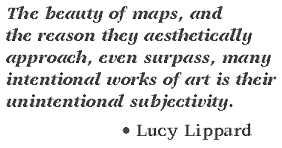With that said, maps can be used in attempts to portray spatial information as accurately as possible or they can also be used in attempts to inaccurately skew spatial information. How maps are designed and what data is included or left out often determines what impression a map will give an audience. It is left up to the cartographer to either accurately or inaccurately portray data dependent on their, or their organizations, goals for a given map. The goal of a map that is to be published in an atlas is very different from the goal of a map that is to appear in a newspaper or magazine article. The goal of an atlas map is to portray spatial data about one or many regions as accurately as possible. This is often done by using all of the data that has been gathered without concern for the way the region will be depicted by that data. Maps in atlases are the closest to what I would consider “map fact,” taking into account that in an atlas there is generally no deliberate attempt to mislead people about the characteristics of a region.
Maps to be published in a newspaper or magazine have the goal of supporting the information contained within the article or feature to which they are paired. This often involves including some information while neglecting other information. This is not due to constraints of space (which is sometimes why things are left out of a map), but due to the desire to highlight those things that support the point a writer/cartographer is trying to make by using a map.

This quote by the well-known author, theorist, and art critic, Lucy Lippard, is very true. However, the subjectivity of maps can also be intentional. Maps are only a subjective view of the objective world, and that subjective view is intentionally or unintentionally shaped by a map’s creator. No map is entirely truthful. Some maps/mapmakers do attempt to come close to depicting the truth, while others have the goal of leading an audience towards their own interpretation of what is true.



No comments:
Post a Comment